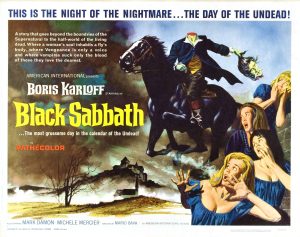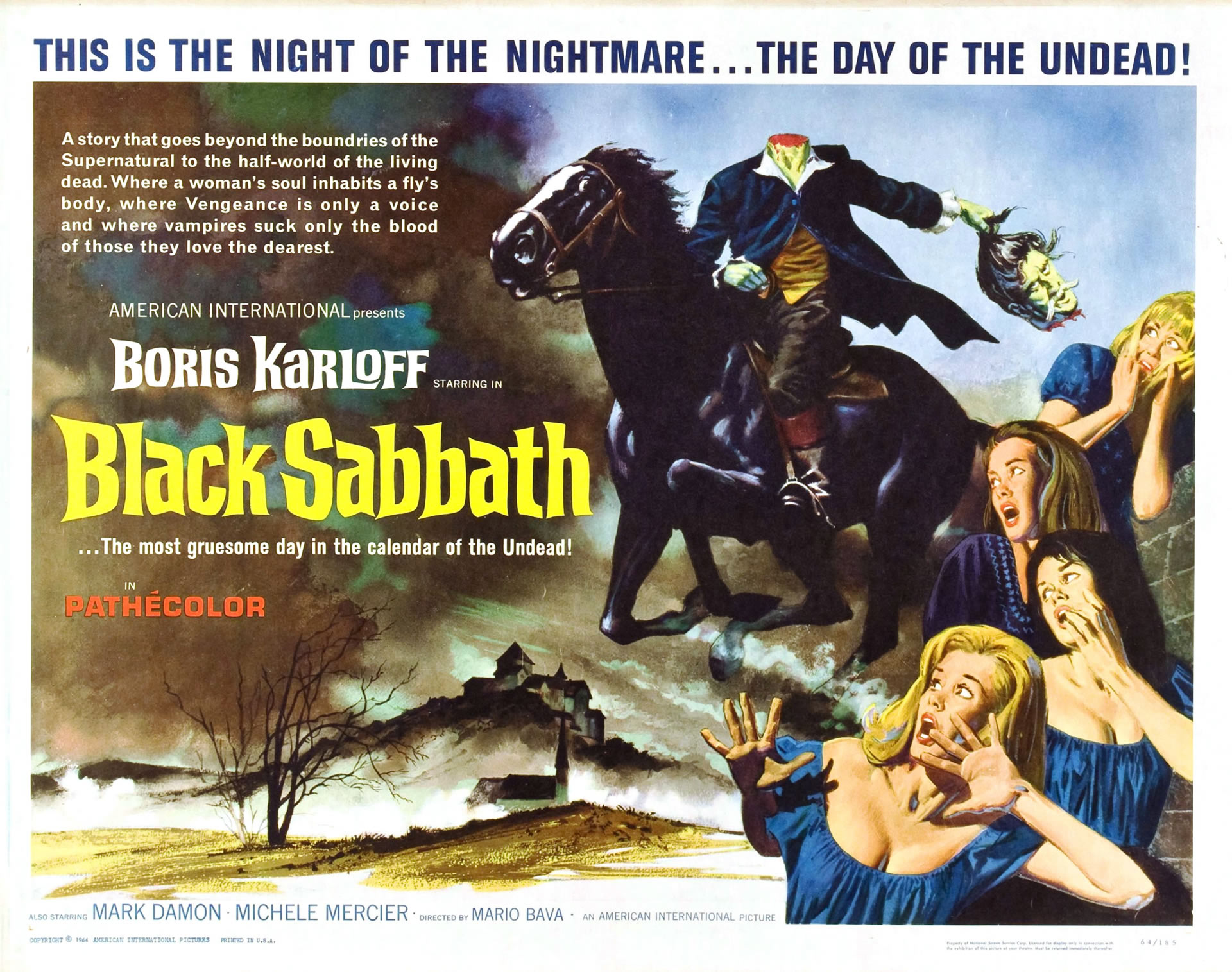
Black Sabbath starts off wisely with the weakest story in the movie, “The Telephone”. There’s nothing incredibly exciting going on, and the interior setting doesn’t allow Bava to fully exercise his usual flair in visuals and atmosphere, rendering this segment a rather routine affair. Any historical significance the segment might have in the shaping of the giallo is made redundant by the fact that Bava himself would go on to define the genre a few years later with Blood and Black Lace.
The patient viewer will be amply rewarded by the following two segments though. The Wurdulak, featuring a ghastly Boris Karloff in one of his best roles, and A Drop of Water, with Jacqueline Pierreux in the role of a greedy nurse, are both the epitome of Mario Bava’s Gothic style in colour.
What makes Black Sabbath so vibrant and captivating is the use of colour in lighting. Going against every rule and defying every sense of historic realism, Bava employs colours from every end of the palette (from magenta to cyan) and lights his sets in the most imaginative ways. It may seem arbitrary, and it may very well be, but the effect cannot be dismissed. It works. Imagine Seijun Suzuki circa Tokyo Drifter doing Black Sunday in colour and you get pretty close to what Bava strives for lighting-wise. There’s a pop art sensibility that contrasts beautifully with the stern tone of the movie. Combined with misty exteriors, long shadows and a baroque opulence, Bava mutates Gothic horror into a unique beast that is simultaneously very familiar and extravagantly exotic.
What’s even more admirable is that Black Sabbath is actually scary. Well not in the traditional sense anymore, no. But there are genuinely chilling moments. I can’t even begin to imagine how horrifying the ending of A Drop of Water or Boris Karloff’s face seen through a smudged glass in The Wurdulak would have been to unsuspecting audiences back in 1963.
In conclusion; seek this movie out, but know what you’re getting into. This is old school Gothic horror with a unique visual flair, a penchant for atmosphere and a great Boris Karloff. In the Gothic horror Bava scale, I would rank it somewhere between Kill! Baby! Kill… (Bava’s other masterpiece) and Lisa and the Devil, if that means anything.

